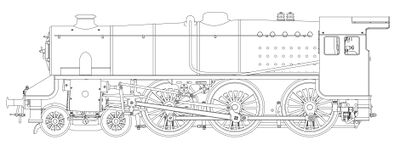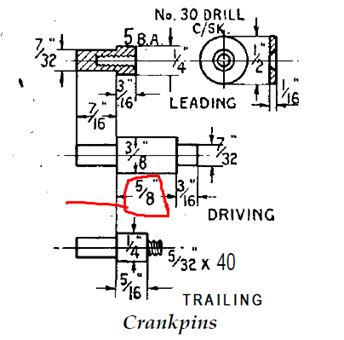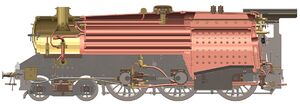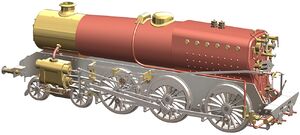LBSC's Doris: Difference between revisions
Jump to navigation
Jump to search
| Line 28: | Line 28: | ||
[[File:Doris Coupling Rod thickness.png|thumb|center|500px|This rod also should be 15/64 inch thick instead of 1/4 inch.]] | [[File:Doris Coupling Rod thickness.png|thumb|center|500px|This rod also should be 15/64 inch thick instead of 1/4 inch.]] | ||
=== Crankpins === | |||
[[File:Doris Crankpin Correction.png|thumb|center|500px|After making the changes above, the crankpins need adjusted. The driving crankpin needs the 5/8 inch dimension to be 19/32 inch.]] | |||
== Documents == | == Documents == | ||
Revision as of 17:46, 22 February 2022
Jim Mullner
February 2022
Drawing Corrections
The information given in the Model Engineer articles is general pretty good but there appear to be issues in a few spots. Namely things will interfere if built to the dimensions shown. Here are a few of those areas that I was able to discern by modeling Doris in Solidworks.
- If you are actually going to build an LBSC design make sure to layout the entire project using 2d or preferably 3d CAD software to avoid nasty surprises during real assembly and testing.
Please use the 3d model files presented here to check your work and review the details provided in the Model Engineer magazine articles. I recommend reviewing the original instructions and then reviewing the 3d model to confirm.
Buffer beam and frame
If angle is used to connect the buffer beams to the frames, recenter the rivets and also be aware using the angles will cause interferences later. But these are minor.
Leading and Trailing Coupling Rods
Coupling Rod Thickness
Crankpins
Documents
- Doris Erection Drawing by Jim Mullner
- Exploding view of Mechanical Lubricator for Doris by Jim Mullner
- Exploding view of Cylinder for Doris by Jim Mullner
- Doris 3D Model in STEP Format
- The 3d model can be opened and viewed using this free viewer: https://www.edrawingsviewer.com/frequently-asked-questions
- "Doris: A 3-1/2 inch gauge L.M.S. Class 5 Loco", by LBSC, Model Engineer (PDF)
- British BA Threads
- Sheet Wire Gauges
- Steam Unions
- Union Nuts & Fittings






